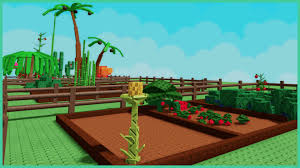There’s something deeply satisfying about enjoying a warm, nourishing bowl of porridge made with ingredients you’ve grown yourself. Whether you’ve cultivated oats, berries, nuts, or herbs in your garden, transforming them into a wholesome breakfast connects you to the food you eat in the most fulfilling way.

In this comprehensive guide, we’ll explore:
- How to grow your own porridge ingredients
- Step-by-step recipes for delicious garden-fresh porridge
- Creative variations (sweet, savory, gluten-free, vegan)
- Nutritional benefits of homemade porridge
- FAQs and troubleshooting tips
By the end, you’ll be inspired to turn your garden harvest into the ultimate comfort food!
Why Make Porridge from Homegrown Ingredients?
Before diving into the how-to, let’s look at why this method is worth the effort:
✅ Fresher & More Nutritious – Homegrown ingredients retain more vitamins and minerals.
✅ Reduces Food Waste – Use excess garden produce in a delicious way.
✅ Sustainable Living – Lowers your carbon footprint by avoiding store-bought processed oats.
✅ Cost-Effective – Save money by growing your own grains, fruits, and nuts.
✅ Customizable Flavors – Experiment with unique herb and spice combinations.
Now, let’s get into the details!
Part 1: Growing Your Own Porridge Ingredients
1. Oats (The Base of Your Porridge)
Oats are a hardy crop that thrives in cooler climates. Here’s how to grow them:
Planting & Care:
- When to Plant: Early spring or fall (avoid extreme heat).
- Soil Requirements: Well-drained, slightly acidic soil (pH 6.0–7.0).
- How to Sow: Scatter seeds and lightly cover with soil (about ½ inch deep).
- Watering: Keep soil moist but not waterlogged.
- Harvesting: Ready in 60–90 days. Cut stalks when seeds are dry and golden.
Processing Homegrown Oats:
- Threshing: Remove oat grains from stalks by rubbing between hands.
- Hulling: Use a rolling pin to separate the outer husk.
- Winnowing: Toss oats in a breeze to blow away chaff.
2. Fruits & Berries for Toppings
Popular choices:
- Strawberries, Raspberries, Blueberries (easy to grow in containers)
- Apples & Pears (dwarf varieties work for small gardens)
- Pumpkin & Squash (roast for a creamy porridge addition)
3. Nuts & Seeds
- Sunflower Seeds – Fast-growing, great for crunch.
- Pumpkin Seeds – Save seeds from pumpkins and roast them.
- Walnuts & Hazelnuts – If you have space for nut trees.
4. Herbs & Spices
- Cinnamon Basil – Adds a sweet, spicy note.
- Mint – Refreshing twist.
- Lavender – For a floral, relaxing flavor.
Part 2: How to Make Porridge from Scratch
Basic Homemade Porridge Recipe
Ingredients:
- ½ cup homegrown oats (or store-bought if needed)
- 1 ½ cups water or milk (dairy/plant-based)
- 1 tbsp honey/maple syrup (or homegrown stevia)
- Pinch of salt
- Toppings: Fresh berries, nuts, seeds, herbs
Instructions:
- Prepare Oats – If using homegrown oats, ensure they’re hulled and cleaned.
- Boil Liquid – Bring water/milk to a gentle simmer.
- Add Oats – Stir in oats and reduce heat. Cook for 5–10 mins (adjust for thickness).
- Sweeten & Flavor – Mix in honey, spices, or vanilla extract.
- Top & Serve – Garnish with garden-fresh toppings.
Part 3: Creative Porridge Variations
1. Savory Garden Porridge
- Ingredients: Oats, vegetable broth, sautéed kale, roasted squash, sunflower seeds.
- Method: Cook oats in broth, top with veggies and a drizzle of olive oil.
2. Vegan Coconut-Berry Porridge
- Ingredients: Oats, coconut milk, chia seeds, homegrown berries.
- Method: Simmer oats in coconut milk, stir in chia seeds, top with berries.
3. Spiced Apple & Walnut Porridge
- Ingredients: Oats, grated apple, cinnamon, walnuts, maple syrup.
- Method: Cook oats with grated apple, top with walnuts and cinnamon.
Part 4: Nutritional Benefits of Garden Porridge
- High in Fiber – Supports digestion and heart health.
- Rich in Antioxidants – Berries and nuts fight inflammation.
- Protein-Packed – Seeds and nuts add plant-based protein.
- Low Glycemic Index – Sustained energy without sugar crashes.
FAQs About Homemade Garden Porridge
1. Can I grow oats in a small garden?
Yes! Oats can be grown in containers if space is limited.
2. How do I store homegrown oats?
Keep them in an airtight container in a cool, dry place for up to 6 months.
3. What if my porridge is too thick?
Add more liquid (water, milk, or plant-based milk) while cooking.
4. Can I make porridge gluten-free?
Yes! Use certified gluten-free oats or substitute with quinoa or buckwheat.
5. How can I add more protein?
Stir in chia seeds, flaxseeds, or nut butter after cooking.
6. Can I freeze porridge for later?
Yes! Portion into containers and freeze for up to 3 months. Reheat with a splash of milk.
Final Thoughts
Making porridge from ingredients you’ve grown yourself is a rewarding way to embrace sustainable, healthy eating. Whether you’re a seasoned gardener or just starting, this guide helps you turn humble homegrown oats, fruits, and herbs into a delicious, nutrient-packed breakfast.
Have you tried growing your own porridge ingredients? Share your experiences in the comments below! 🌱🍓